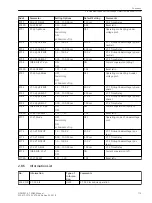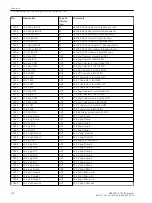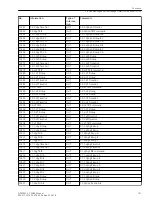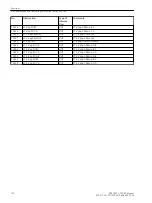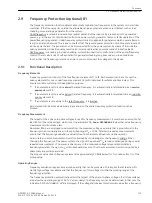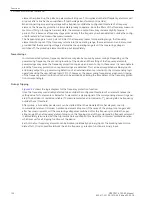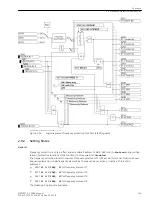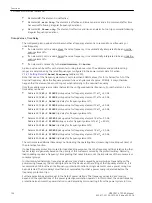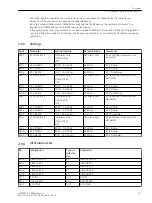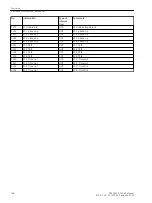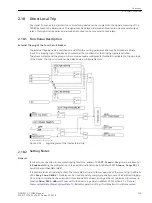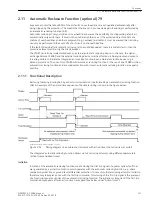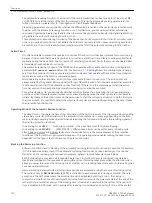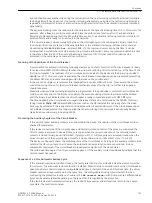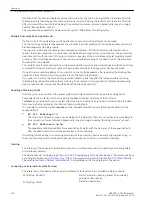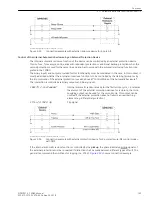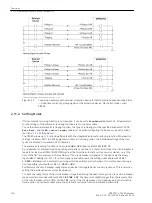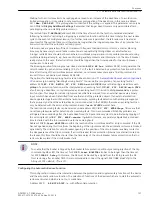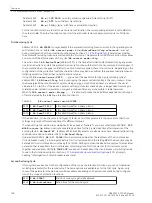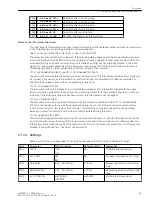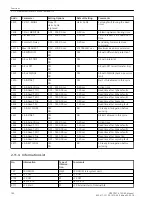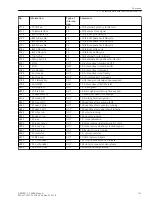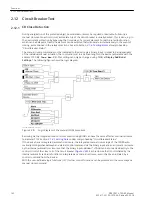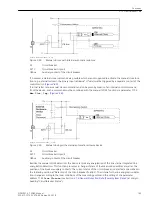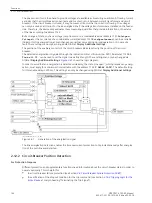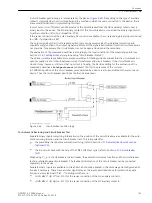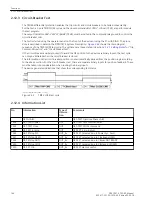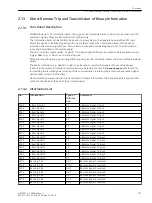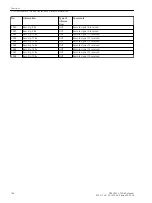
tion functions causes another trip during the restraint time, the next reclosing cycle will be started if multiple
reclosing attempts have been set. If no further reclosing attempts are permitted, the last reclosing attempt is
regarded as unsuccessful in case of another trip during the restraint time. The automatic reclosure is blocked
dynamically.
The dynamic blocking locks the reclosure for the duration of the dynamic blocking time (0.5 s). This occurs, for
example, after a final trip or other events which block the auto reclose function after it has been started.
Restarting is blocked during this time. When this time expires, the automatic reclosing function returns to its
quiescent state and is ready for a new fault in the network.
If the circuit breaker is closed manually (by the control discrepancy switch connected to a binary input, the
local control functions or via one of the serial interfaces), the automatic reclosing is blocked for a manual-
closeblocking time
BLOCK MC Dur.
, address 3404. If a trip command occurs during this time, it can be
assumed that a metallic short-circuit is present (e.g. closed earth switch). Every trip command within this time
is therefore a final trip. With the user-definable logic functions (CFC) further control functions can be
processed in the same way as a manual close command.
Scanning of the Readiness of the Circuit Breaker
A precondition for automatic reclosing following clearance of a short circuit is that the circuit breaker is ready
for at least one OPEN-CLOSE-OPEN-cycle when the automatic reclosing circuit is started (i.e. at the time of the
first trip command). The readiness of the circuit breaker is signaled to the device via the binary input
>Bkr1
Ready
(no. 371). If no such signal is available, the circuit-breaker interrogation can be suppressed (presetting
of address 3402) as automatic reclosing would otherwise not be possible at all.
In the event of a single cycle reclosure this interrogation is usually sufficient. Since, for example, the air pres-
sure or the spring tension for the circuit-breaker mechanism drops after the trip, no further interrogation
should take place.
Especially when multiple reclosing attempts are programmed, it is a good idea to monitor the circuit-breaker
condition not only prior to the first but also before the second reclosing attempt. Reclosure will be blocked
until the binary input indicates that the circuit breaker is ready to complete another CLOSE-TRIP cycle.
The time needed by the circuit breaker to regain the ready state can be monitored by the 7SD80. This moni-
toring time
CB TIME OUT
(address 3409) starts as soon as the CB indicates the not ready state. The dead
time may be extended if the ready state is not indicated when it expires. However, if the circuit breaker does
not indicate its ready status for a longer period than the monitoring time, reclosure is dynamically blocked
(see also above under margin heading 3409).
Processing the Auxiliary Contacts of the Circuit Breaker
If the circuit-breaker auxiliary contacts are connected to the device, the reaction of the circuit breaker is also
checked for plausibility.
If the series connections of the normally open and normally closed contacts of the poles are connected, the
circuit breaker is assumed to have all three poles open when the series connection of the normally closed
contacts is closed (binary input
>52b Bkr1 3p Op
, no.4111). All three poles are assumed closed when the
series connection of the normally open contacts is closed (binary input
>52a Bkr1 3p Cl
, no. 410).
The device continuously checks the switching state of the circuit breaker: As long as the auxiliary contacts indi-
cate that the CB is not closed in all 3 poles, the automatic reclosure function cannot be started. A close
command is only issued if the circuit breaker tripped previously (from of the closed state).
The valid dead time begins if no trip command applies, or if the auxiliary contacts additionally indicate that the
circuit breaker has opened.
Sequence of a 3-Pole Automatic Reclose Cycle
If the automatic reclosure function is ready, the fault protection trips for all faults inside the element selected
for reclosure. The automatic reclosure function is started. When the trip command resets or the circuit breaker
opens (auxiliary contact criterion) a configurable dead time is started. At the end of this dead time, the circuit
breaker receives a close command. At the same time, the configurable blocking time is started. If, when
configuring the protective functions, at address 134
AR control mode
= with Pickup was set, different dead
times can be parameterized depending on the type of fault recognized by the protection.
If the fault is cleared (successful reclosure), the restraint time expires and all functions return to their quies-
cent state. The fault is terminated.
Functions
2.11 Automatic Reclosure Function (optional) 79
SIPROTEC 4, 7SD80, Manual
133
E50417-G1100-C474-A2, Edition 02.2018
Summary of Contents for SIPROTEC 4 7SD80
Page 8: ...8 SIPROTEC 4 7SD80 Manual E50417 G1100 C474 A2 Edition 02 2018 ...
Page 10: ...10 SIPROTEC 4 7SD80 Manual E50417 G1100 C474 A2 Edition 02 2018 ...
Page 18: ...18 SIPROTEC 4 7SD80 Manual E50417 G1100 C474 A2 Edition 02 2018 ...
Page 248: ...248 SIPROTEC 4 7SD80 Manual E50417 G1100 C474 A2 Edition 02 2018 ...
Page 298: ...298 SIPROTEC 4 7SD80 Manual E50417 G1100 C474 A2 Edition 02 2018 ...
Page 312: ...312 SIPROTEC 4 7SD80 Manual E50417 G1100 C474 A2 Edition 02 2018 ...
Page 322: ...322 SIPROTEC 4 7SD80 Manual E50417 G1100 C474 A2 Edition 02 2018 ...
Page 400: ...400 SIPROTEC 4 7SD80 Manual E50417 G1100 C474 A2 Edition 02 2018 ...
Page 402: ...402 SIPROTEC 4 7SD80 Manual E50417 G1100 C474 A2 Edition 02 2018 ...

